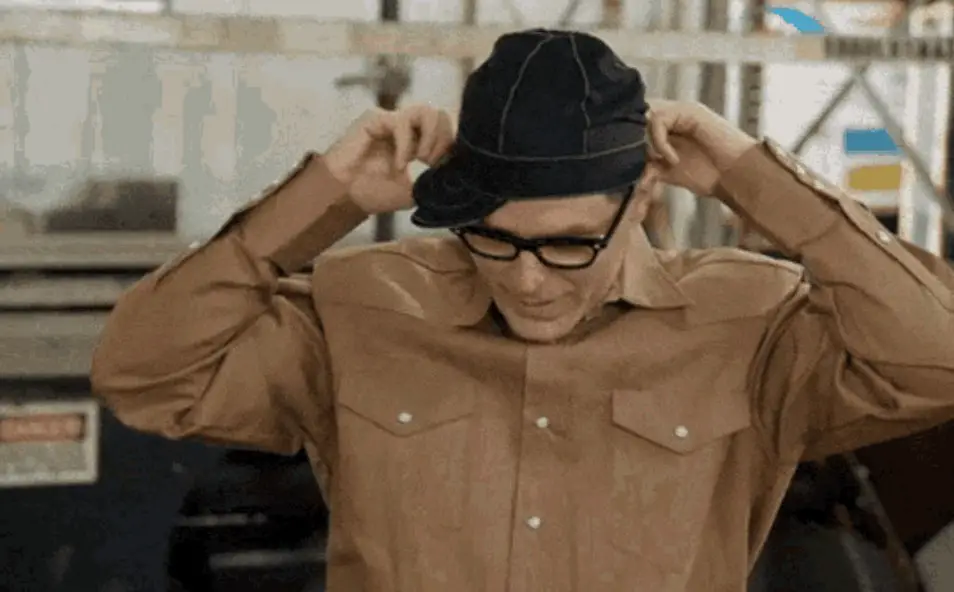Welding exposes you to physical and chemical hazards since the welding equipment generates fire sparks that can burn your skin. The gadget also emits hazardous radiation that can injure your skin.
These dangers can be avoided by using a welding hat, often known as a welding hair cover. Knowing the finest welding caps to buy and why you should use one can help you protect yourself.
Welders must wear welding hats to protect their heads, necks, and ears from flying welding sparks. A decent quality welding cap will not only protect you from sparks, but it will also give great insulation against extreme cold.
There are times when welders wear their caps sideways because when they’re welding in unusual positions, such as side welding, they draw the hat down over the top of the ears and turn the bill to cover the ear on the high side. This is to protect your ears from the direct effect of heat and flames.
Reasons you need Welding Caps
1.) Safety
Welding hoods are sometimes referred to as helmets, yet they provide no protection for your head. They are designed to protect your face and neck while also providing a correct lens shade to prevent UV radiation from your welding arc.
And if you don’t wear a cap below your welding hood, your head will be exposed. That is why you need caps with a tight fit and a FR cotton composition to protect your scalp from burns.
The cotton fabric is flame-resistant. It deflects any sparks that may otherwise burn your hair and skin. Some caps include flaps that allow the cap to conform to the shape of your head.
2.) Comfort
Welding is a profession that involves a lot of heat and sparks that may be quite sweaty and uncomfortable.
The welding cap is constructed of a material that absorbs moisture. The material absorbs sweat, keeping you dry and cool. The cap is also composed of permeable material, allowing air to circulate and cool your scalp and ears.
Also, the cap cloth functions as a cushion, shielding the body from the discomfort produced by the metal used to build the helmet. Wearing the hat under the helmet secures it and keeps it from falling off. As a result, wearing a helmet with a beanie is a fantastic option.
How to Choose a Welding Cap
If you are new to welding, it might be difficult to pick from the various sizes, patterns, and quality of welding caps.
That is why we have compiled a list of items to consider when purchasing a welding cap:
1.) Fabric
It is essential to choose the right material for your welding cap as it goes a long way toward ensuring your comfort. Choose a cap made completely of cotton fabric.
To begin with, cotton is absorbent, so sweat will not collect on your skin while working. This feature is critical since you will be operating in hot conditions that will cause you to sweat.
Second, cotton is resistant to fire. The material generates fire sparks when it hits on your head or neck. Additionally, fabric designers sew the cotton strands in a porous manner that allows ventilation. Polyester and nylon, on the other hand, are combustible and ineffective absorbers.
2.) Welding Cap Type
In today’s market, you may discover a variety of skull caps, all designed to protect your head, ears, and neck when welding. These types are appropriate for a variety of reasons.
You can wear a skull cap, rag cap, beanie hat, or baseball cap depending on your needs.
The form is the deciding element in this case. Head caps and beanie hats, for example, suit the skull and ears and are usually worn with a visor or helmet.
Baseball hats and rag caps, on the other hand, protect the head, ears, neck, and collar region owing to the flaps and bills.
3.) Size
Choose a welding cap that fits well. A tight cap might be uncomfortable, while a loose one can slip off while working. Buying a welding beanie with adjustability options such as hook and loop or elastic bands is the best method to ensure proper fit.
4.) Flexibility
Most caps are adjusted in your head according to the welding needs. For instance, you’re welding something overhead so you’ll have to shield your head and neck from falling sparks. Therefore in such cases, you should adjust the cap and keep the flap at the back of your head.
Similarly, if you are welding on a one-sided angle, you should shield your chin and ear that is facing the machine. A cap that can be flipped to the side can come in handy in this situation.
5.) Design
Welding caps traditionally had more than one layer. A multi-paneled welding cap is the finest choice since it suits any skull shape and structure. Because you may not be able to afford a custom-made cap to fit your head, a multi-panel cap will come in handy.
Furthermore, the cap should have two sides so that you may wear it on either side. The outside side should feature prints, while the opposite side should be constructed of a single color cloth.
The double-sided cap is stronger. The cap should also be made of extremely absorbent linen to keep sweat from entering the face or neck area.
Since your welding cap has to be worn under the welding helmet, you need to ensure that the fit is right. If not, you are going to feel stuffy and uncomfortable while you are working.
See also: What is the Purpose of a Welders Cap?
FAQs-
Can Regular Caps be used as a Welding Cap?
There are two reasons why you cannot use your regular cap as a welding cap.
1.) A welding cap is made of FR properties that are designed to keep your head and scalp safe from any impending danger during work, whereas a normal cap is not made of FR properties.
2.) The shape of a welding cap is significantly different from that of a regular cap. This is because welding caps are designed in a way to fit inside of a welding helmet or hood.
Why is the Bill of a Welding Cap Faced Downwards?
The bill of the caps are oriented downward for a reason. Welders will place the bill over the ear nearest to the welding arc as this keeps slag and sparks from shooting into your ear canal, and this form of ear damage is quite hazardous. Wearing earplugs and placing the bill over your ear is an excellent precaution.
Different ways to Wear a Welding Cap
1.) Wear the Cap with the Crown up and the Bill to the Side- When welding in a one-sided posture, this position comes in useful. The bill is angled to the side to shield the chin and ear from direct contact with the machine.
2.) Wear the Cap with the Bill Facing Back and the Crown Pulled Down to Cover more of the Neck Region- This position is appropriate for welding in the above position. As you labour on an above site, sparks may land on your head, neck, and clothing. A back-facing bill will help protect the neck and collar area by covering long hair.
Recommended Welding Caps for you
1.) Revco Cotton Welding Cap
The side flaps of this cap protect the ears, eyes, and neck area. And the high crown allows for tucking in long hair, whereas the elastic band secures the hair. It also comes with an elastic band that conforms to any head shape or size.
Check it out here-
- Bc5w-bk bsx armor cotton welding cap
- Welding cap, doo rag and beanie - all in one
- One size fits all~
Prices pulled from the Amazon Product Advertising API on:
Product prices and availability are accurate as of the date/time indicated and are subject to change. Any price and availability information displayed on [relevant Amazon Site(s), as applicable] at the time of purchase will apply to the purchase of this product.
2.) Welder Nation Welding Cap
This welding hat is one of the most effective. It consists of eight layers. It is also composed of 100% cotton fabric, which makes it breathable for easy air circulation.
Check it out here-
- BUILT TO LAST
- YOUR PERFECT WELDING CAP
- THE IDEAL FIT
- TRIED & TRUE
- High Crown 8 Panel Pattern
Prices pulled from the Amazon Product Advertising API on:
Product prices and availability are accurate as of the date/time indicated and are subject to change. Any price and availability information displayed on [relevant Amazon Site(s), as applicable] at the time of purchase will apply to the purchase of this product.
3.) Lincoln Electric Welding Cap
It’s a flame-resistant welding headgear made entirely of cotton for breathability. It is both sweat-absorbing and comfortable while also being affordable.
Check it out here-
- HIGH QUALITY COTTON
- SWEAT ABSORBANT LINER
- FLAT STITCHED SEAMS
- LIGHTWEIGHT & BREATHABLE
- ELASTIC FIT
- USED BY PROFESSIONAL
Prices pulled from the Amazon Product Advertising API on:
Product prices and availability are accurate as of the date/time indicated and are subject to change. Any price and availability information displayed on [relevant Amazon Site(s), as applicable] at the time of purchase will apply to the purchase of this product.
Conclusion
When welding, it is important to wear a welding caps it shields your scalp, hair, ears, and neck from flying sparks. The cap is made of sweat-absorbing cotton. Also, the cap keeps the helmet in place.
Choosing the best welding caps is critical for your safety and comfort.










